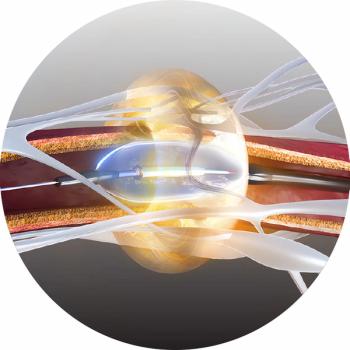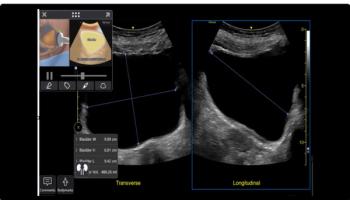
Report from ECR: Urologist shows radiologists how to get ahead in prostate imaging
An unusual eulogy by a urologist sparked peals of laughter from radiologists during a prostate cancer imaging session at the European Congress of Radiology. The topic focused on a physical test that men have come to know, if not exactly love.
An unusual eulogy by a urologist sparked peals of laughter from radiologists during a prostate cancer imaging session at the European Congress of Radiology. The topic focused on a physical test that men have come to know, if not exactly love.
"The finger is dead," said Dr. Bob Djavan of the University of Vienna. "We still do the digital rectal exam because patients like it [more laughter], but the reality is we don't need the finger anymore because now we have PSA."
This reality check applies not just to the routine rectal exam and the ubiquitous prostate specific antigen test, however. From the urologist's viewpoint, imaging of the prostate is lagging far behind real-world needs, he said. A standout among refresher courses, the lecture was by turns serious and silly, gloomy and hopeful, and provocative and conciliatory toward radiology.
Djavan's key message is that the value of imaging in the prostate has been underestimated.
"Urology textbooks all carry the same message: 'Forget imaging in prostate cancer,'" he said.
So far, prostate imaging has found a modest home in oncology, where CT is relied upon, perhaps unnecessarily, for planning radiation treatment.
The perception in urology, supported by the majority of scientific literature, is that imaging is of little use in prostate cancer. Clinical trials have focused on patients at low risk for aggressive cancer (new or recurrent), rather than those who are at high risk for a poor prognosis. This does radiology an injustice when it comes to evaluating prostate cancer imaging, Djavan said.
Roughly 13% of 50-year-old men harbor prostate cancer, but only 3% will die of it. The disease is slow to kill, yet the PSA test enables early detection, which can give rise to treatment for cancer, regardless of the nature of the tumor. Ultrasound has proven helpful in changing the way prostate biopsies are performed, he said.
Thanks to the study, ultrasound makes it possible to detect more cancers. But that advantage represents a double-edged sword. The value of detecting all cancers early is questionable, he said. Urologists order too much treatment, and radiation oncologists are sometimes too keen to irradiate.
"If given the opportunity, radiation oncologists would irradiate a pimple," Djavan said.
Identification of the most aggressive cancers is vital, he said. Recurrence is a particular concern, because about one-third of men will experience recurrence after surgical treatment within seven years.
Patients at higher risk stand to benefit more from early detection, possibly through imaging. Too often, clinical trials are diluted by low-risk patients, making it appear that imaging has less of a role of play.
"If you include this group of low-risk patients, you dilute your study with low sensitivity- and low-specificity patients, and that will kill your technology," Djavan said. "The trend is toward finding high-risk patients. If you do that, you will have much better results with imaging."
Large trials have shown potential for reducing mortality with early detection of recurrence.
"We would be much better off if we had accurate tools for imaging to detect recurrence and treat those patients early," he said.
Djavan stressed the need for radiologists to combine and correlate imaging studies with clinical tests like PSA, which is the main tool for detecting recurrence. The Gleason score also plays a critical role in predicting likelihood of recurrence.
"There is much more potential for imaging, which right now is at ground zero," Djavan said.
Currently, after radiation therapy, it is impossible to tell whether the procedure has been completely successful. Prior to surgery, it would be very useful if imaging could show whether the patient has organ-confined disease.
Some researchers are beginning to experiment with computer modeling that combines clinical tools with imaging to predict likelihood of cancer recurrence before the patient even gets on the operating table.
To combine imaging with clinical techniques successfully, radiologists should aim to work hand in hand with urologists.
"There should be a boost in cooperation between urology and radiology. Don't play your own game and don't be individuals. That goes for you as radiologists and us as urologists. Help us treat people who need it and don't treat those who don't need it," he said.
For more online information, visit Diagnostic Imaging's
Newsletter
Stay at the forefront of radiology with the Diagnostic Imaging newsletter, delivering the latest news, clinical insights, and imaging advancements for today’s radiologists.





























